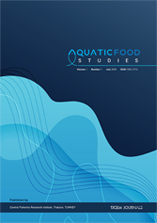Horticultural Studies (HortiS)
2021, Vol 38, Num, 1 (Pages: 23-28)
Determination of Leaf Area of Some Vegetable Plants Grown under Greenhouse Condition by Non-Destructive Methods
Cihan KARACA 1 ,Dursun BÜYÜKTAŞ 1 ,Süleyman ŞEHİR 1
1 Akdeniz University Faculty of Agriculture Department of Agricultural Structures and Irrigation, 07058 Antalya / Turkey
DOI :
10.16882/HortiS.841745
Viewed :
2848
-
Downloaded :
2477
The use of a mathematical model approach, which is a non-destructive method to determine the leaf area, has been used safely in recent years. The most important reason for this is that the application is easy and the application cost is very low. The most important disadvantage of this method is that the derived models need calibration according to different crop varieties. In the study, firstly, the width (W) and length (L) measurements of each individual leaf taken from the crops were correlated with the actual area of the leaf and crop-specific models were developed. The actual area (LA) of each leaf used in the sampling was determined by the ImageJ software. In the study, 7 different models were derived for each crop species (1, LA=a+bL2+cL2/W2+dW2+eLW; 2, LA=a+bL2+cW2+dLW; 3, LA=a+bL2+cW2; 4, LA=aL2+bW2; 5, LA=aLb+cWd+e; 6, LA=a+bLW; 7, LA=aLW). The coefficients in the models were determined separately for each crop species. In order to evaluate the performance of the models, some performance criteria such as determination coefficient (R2) and root mean square error (RMSE), relative error (RE), mean bias error (MBE) and Willmott index (d) were used. In this study, leaf areas were estimated with high accuracy (R2=0.96 for tomato; R2=0.99 for pepper, eggplant and cucumber) with these models without using expensive measuring devices.
Keywords :
Solanum lycopersicum L., Solanum melongena L., Capsicum annuum L., Cucumis sativus L., Regression














